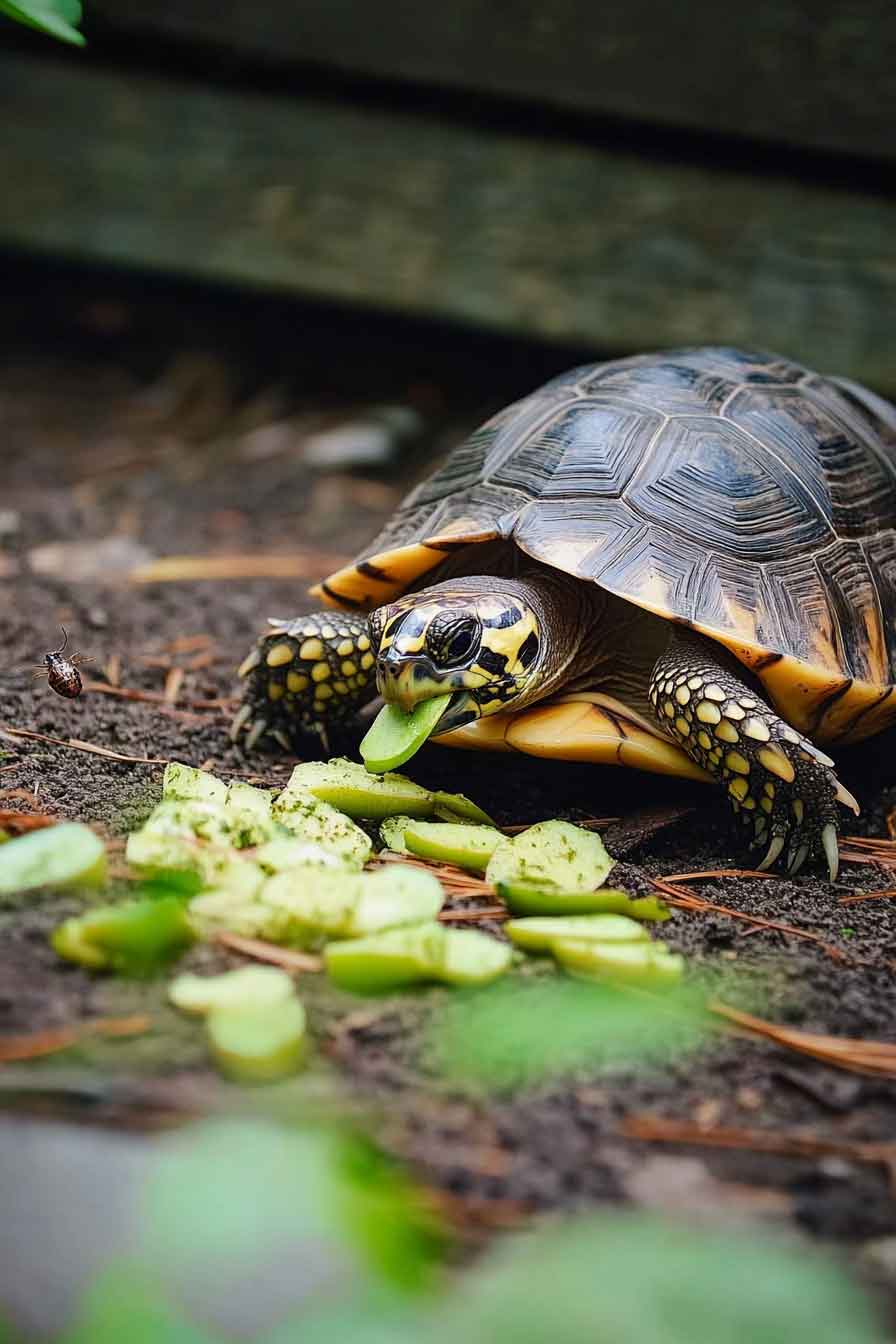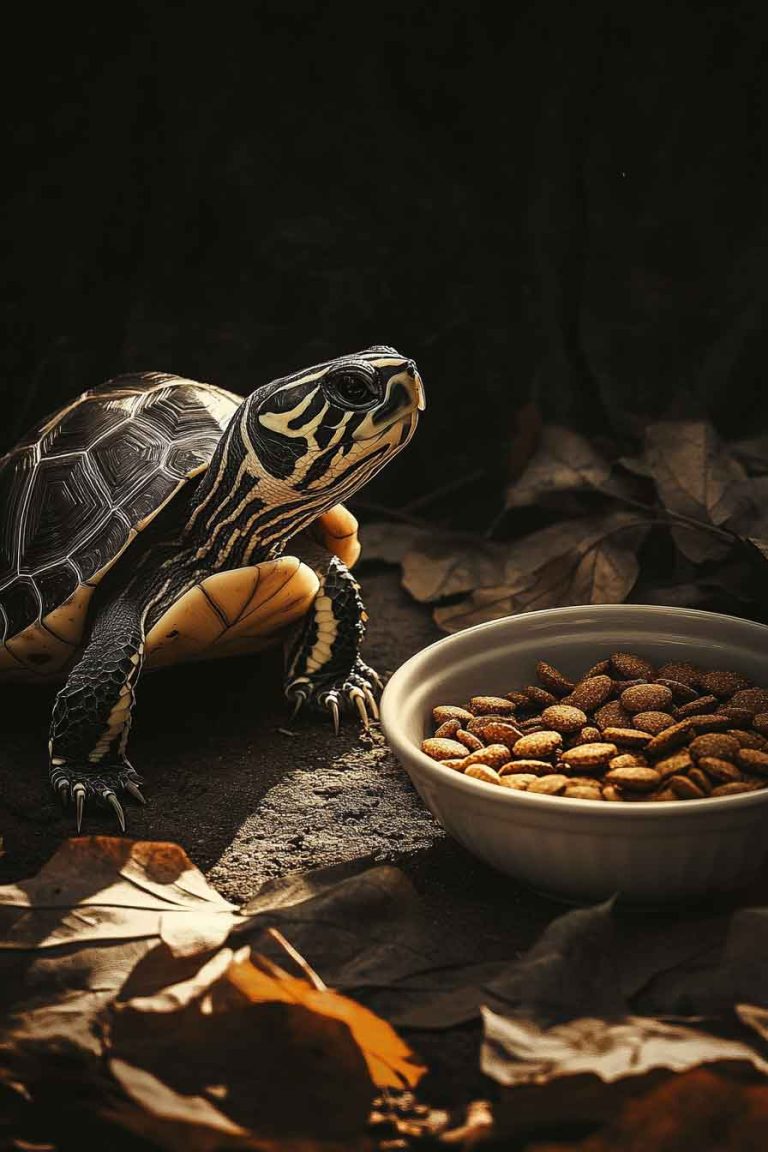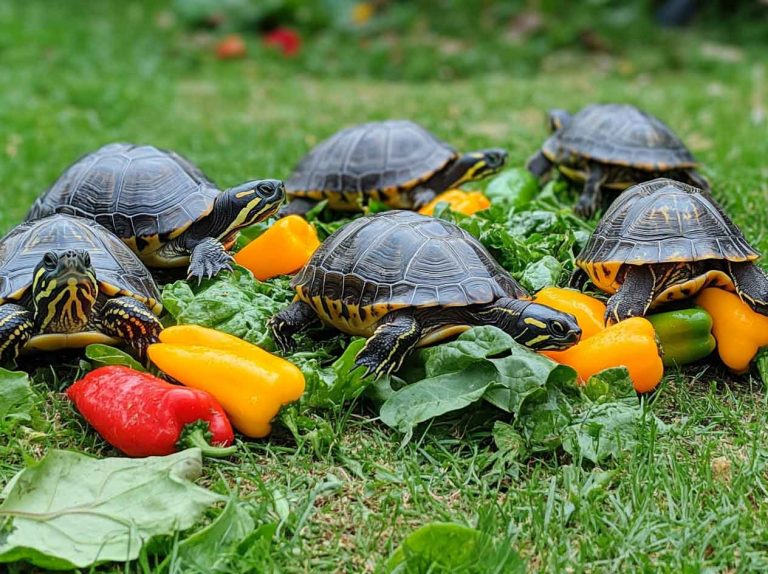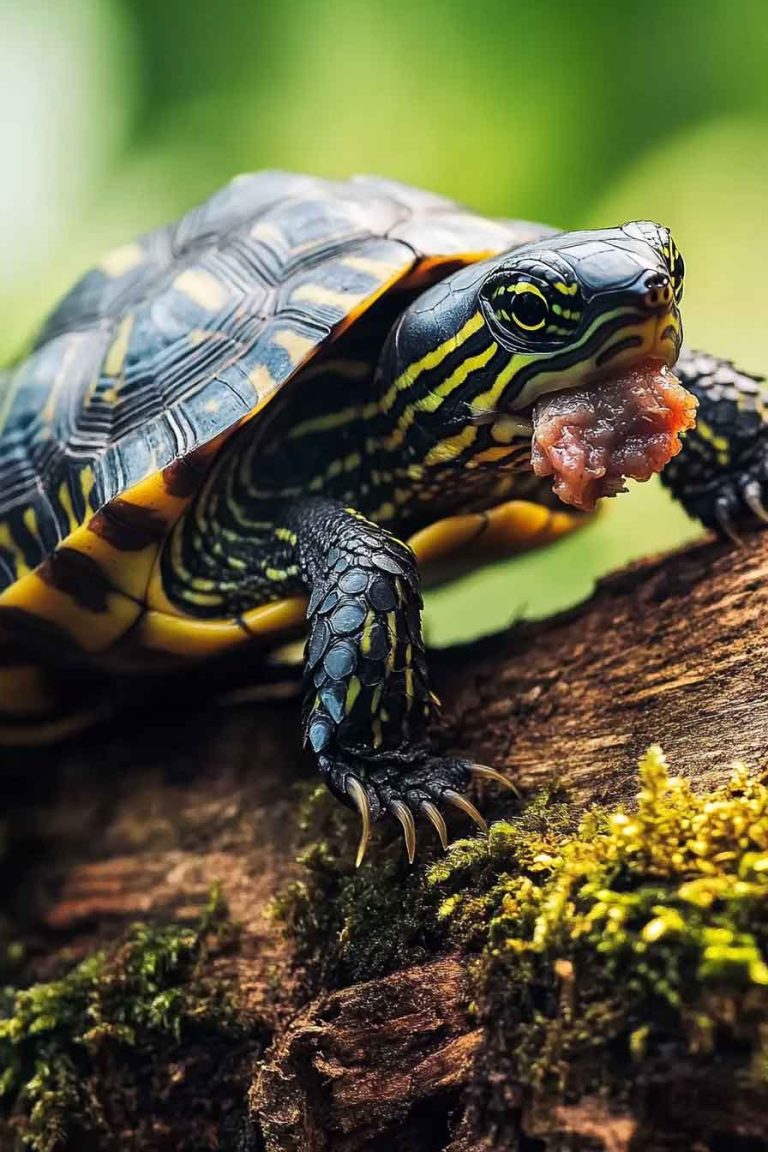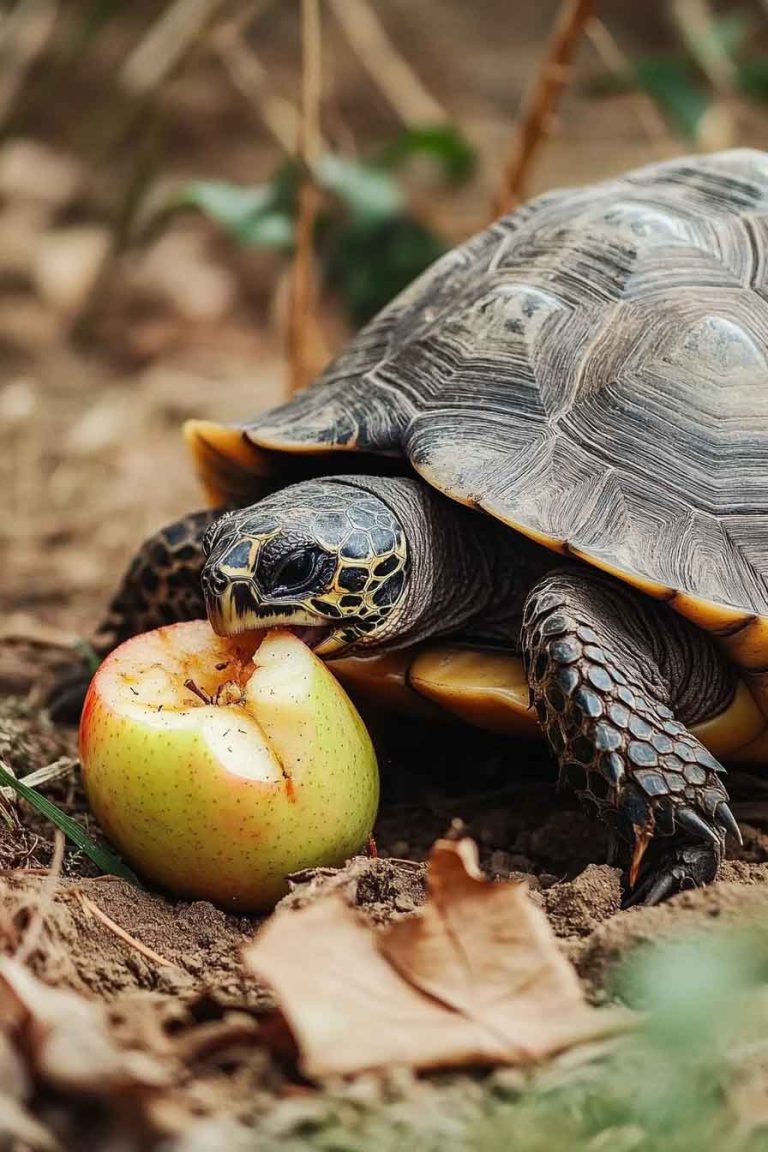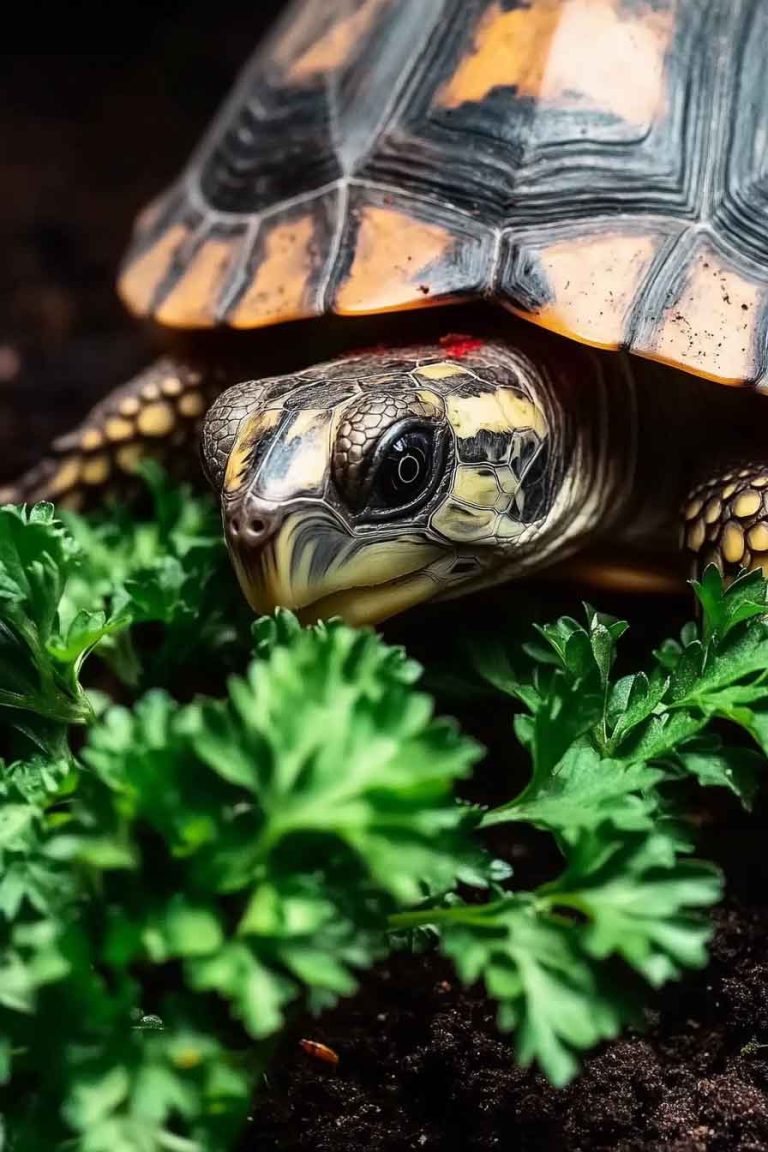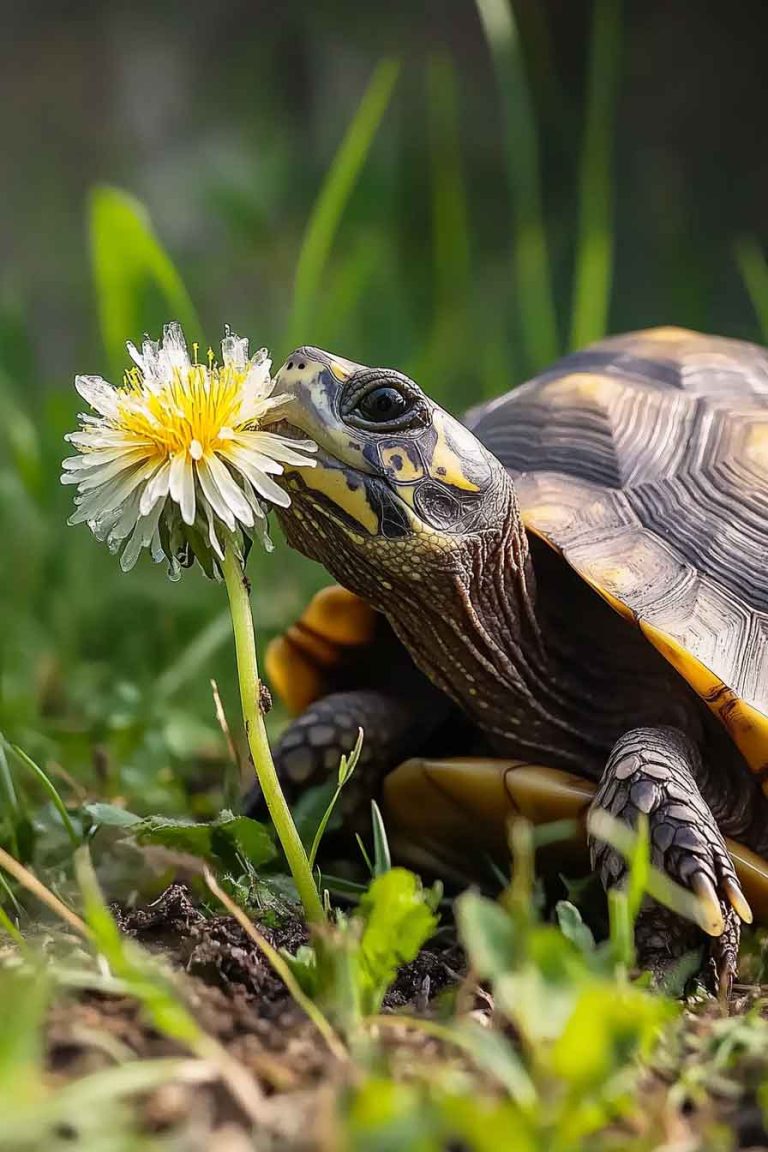Can Turtles Eat Green Beans? Full Guide for Pet Owners
If you’re a turtle owner like me, you’ve probably found yourself wondering whether you can share your dinner vegetables with your shelled companion. I know I have! When I’m preparing green beans for my family, I often catch myself thinking, “Can my turtle enjoy these too?” It’s a natural thought – after all, green beans…
If you’re a turtle owner like me, you’ve probably found yourself wondering whether you can share your dinner vegetables with your shelled companion. I know I have! When I’m preparing green beans for my family, I often catch myself thinking, “Can my turtle enjoy these too?” It’s a natural thought – after all, green beans are healthy vegetables packed with nutrients.
So, can turtles eat green beans? The answer is yes – turtles can eat green beans, and they’re actually quite good for them! Green beans are safe, nutritious, and provide several health benefits for your turtle when given in moderation. However, there are some important things you need to know about preparation and serving sizes to ensure your turtle stays healthy in the long run.
In this article, I’m going to share everything I’ve learned about feeding green beans to turtles. From nutritional benefits to potential risks, preparation methods, and serving guidelines – I’ll cover it all so you can make informed decisions about your turtle’s diet.
Can You Feed Green Beans To Your Pet Turtle?
The short answer is – absolutely yes! Unlike some vegetables that can be harmful to turtles, green beans are actually considered a safe and beneficial food choice. I’ve been feeding green beans to my turtles for years, and they not only enjoy them but thrive on them when they’re part of a balanced diet.
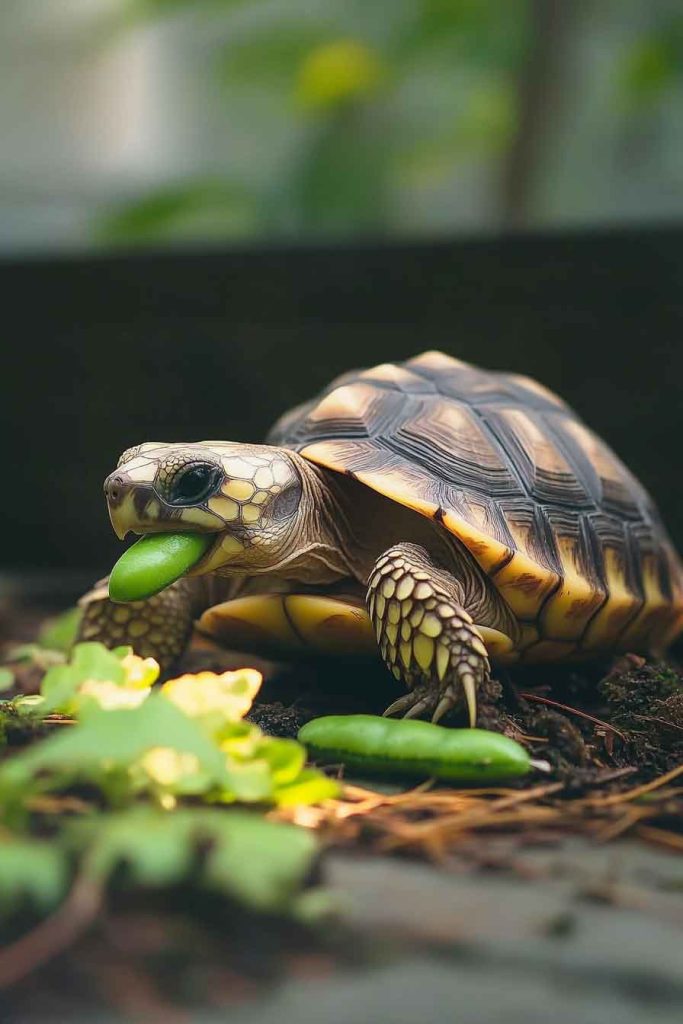
Green beans are an excellent vegetable choice for turtles because they have a favorable nutritional profile that aligns well with what turtles need. Let me break down the nutritional content of 100 grams of raw green beans to show you why they’re so beneficial:
Nutritional Content of Green Beans (per 100g):
- Carbohydrates: 7g
- Sugar: 3.3g
- Protein: 1.8g
- Calcium: 37mg
- Phosphorus: 38mg
- Vitamin C: 12.2mg
- Vitamin A: 690 IU
- Vitamin K: 43mcg
- Folate: 33mcg
- Potassium: 211mg
- Magnesium: 25mg
- Iron: 1mg
- Fiber: 2.7g
Looking at this nutritional profile, you can see why green beans are such a great choice for turtles. They’re low in sugar compared to many other vegetables, which is important because turtles can’t process high amounts of sugar effectively. The calcium to phosphorus ratio is nearly 1:1, which while not perfect, is much better than many vegetables that have too much phosphorus.
The vitamin content is particularly impressive. Vitamin A is crucial for turtle health, supporting their immune system, vision, and shell development. Vitamin K helps with proper calcium absorption, and the moderate vitamin C content provides antioxidant benefits without being overwhelming for their digestive system.
Do Turtles Like Green Beans?
In my experience, most turtles do enjoy green beans! I’ve noticed that turtles are often attracted to the crisp texture and mild flavor. Unlike some vegetables that turtles might reject, green beans seem to be quite palatable to them.
However, just like humans, individual turtles have their own preferences. I’ve had some turtles that absolutely love green beans and get excited when they see me preparing them, while others are more indifferent. The key is to introduce green beans gradually and observe your turtle’s response.
One thing I’ve learned is that the way you prepare green beans can significantly impact whether your turtle will eat them. Some turtles prefer them raw and crunchy, while others like them slightly blanched and softer. I’ll talk more about preparation methods later in this article.
Health Benefits of Green Beans for Turtles
Green beans offer numerous health benefits that make them an excellent addition to your turtle’s diet. Let me share what I’ve observed and learned about these benefits:
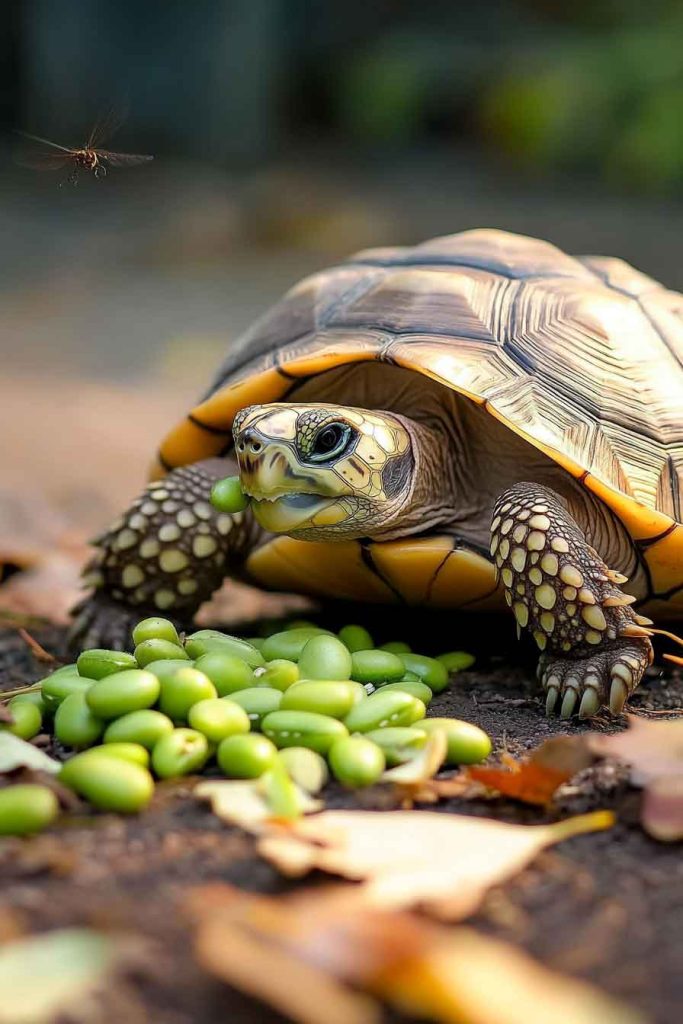
Digestive Health Support
Green beans are rich in fiber, which is excellent for turtle digestive health. I’ve noticed that turtles who regularly eat green beans tend to have more regular bowel movements and fewer digestive issues. The fiber helps promote healthy gut bacteria and keeps their digestive system functioning smoothly.
Shell and Bone Development
The calcium content in green beans, combined with vitamin K, supports proper shell and bone development. While green beans shouldn’t be your turtle’s primary calcium source, they contribute to their overall calcium intake in a healthy way.
Immune System Boost
The vitamin A content in green beans is particularly beneficial for turtle immune systems. I’ve observed that turtles with adequate vitamin A intake tend to be more resistant to respiratory infections and other common health issues.
Antioxidant Properties
Green beans contain various antioxidants that help protect your turtle’s cells from damage. These compounds support overall health and may contribute to longevity when part of a balanced diet.
Weight Management
Green beans are low in calories but high in nutrients, making them an excellent food for maintaining healthy weight in turtles. This is particularly important for pet turtles who may not get as much exercise as their wild counterparts.
Potential Risks and Precautions
While green beans are generally safe for turtles, there are some precautions I always recommend to fellow turtle owners:

Oxalate Content
Green beans do contain oxalates, though in relatively low amounts compared to vegetables like spinach. Oxalates can interfere with calcium absorption if consumed in large quantities. This is why I always stress the importance of variety in your turtle’s diet – green beans should be part of a rotation of vegetables, not the only vegetable you feed.
Pesticide Concerns
Like all vegetables, green beans can contain pesticide residues. I always recommend washing green beans thoroughly before feeding them to your turtle. Even better, choose organic green beans when possible, or grow your own if you have the space.
Overfeeding Issues
While green beans are healthy, overfeeding any single food item can cause nutritional imbalances. I’ve learned that moderation is key to maintaining your turtle’s health in the long run.
Choking Hazard
Depending on your turtle’s size, whole green beans might present a choking hazard. I always cut green beans into appropriate sizes for my turtles – usually into 1-2 inch pieces for adult turtles and smaller pieces for juveniles.
How to Prepare Green Beans for Your Turtle
Proper preparation is crucial for making green beans safe and appealing to your turtle. Here’s how I prepare green beans for my turtles:
Washing and Cleaning
First, I always wash green beans thoroughly under cool running water. I gently scrub them to remove any dirt, debris, or potential pesticide residues. This step is non-negotiable – never skip the washing process.
Raw vs. Cooked Preparation
I’ve found that both raw and lightly blanched green beans work well for turtles:
Raw Green Beans: These retain maximum nutritional value and provide a satisfying crunch that many turtles enjoy. Simply wash, trim the ends, and cut into appropriate sizes.
Blanched Green Beans: Some turtles, especially older ones or those with dental issues, prefer softer green beans. To blanch, boil water, add the green beans for 2-3 minutes until they’re bright green and slightly tender, then immediately transfer to ice water to stop the cooking process.
Cutting and Sizing
I always cut green beans into pieces appropriate for my turtle’s size. For adult turtles (6+ inches), I cut them into 1-2 inch pieces. For juveniles, I make smaller pieces to prevent choking. The pieces should be large enough that your turtle can grab them but small enough to swallow safely.
Storage Tips
Fresh green beans can be stored in the refrigerator for up to a week. I prepare several days’ worth at once and store them in airtight containers. If you blanch green beans, they should be used within 2-3 days for best quality.
How Much Green Beans Should Turtles Eat?
This is one of the most important questions I get from fellow turtle owners. The amount of green beans your turtle should eat depends on several factors:
General Guidelines
For adult turtles, I recommend that vegetables (including green beans) make up about 80-90% of their diet, with the remaining 10-20% being protein sources like insects, fish, or commercial turtle pellets for omnivorous species. For herbivorous turtles, vegetables should make up nearly 100% of their diet.
Within the vegetable portion, green beans should represent no more than 10-15% of the total vegetable intake. This means if you’re feeding your turtle a cup of vegetables per day, green beans should make up no more than about 2-3 tablespoons of that amount.
Frequency Recommendations
I typically feed green beans to my turtles 2-3 times per week as part of their vegetable rotation. This frequency provides the benefits without risking nutritional imbalances from overfeeding any single food item.
Age-Specific Considerations
Adult Turtles: Can handle the full recommended amounts as described above.
Juvenile Turtles: Should receive slightly smaller portions relative to their body size, with green beans making up no more than 10% of their vegetable intake.
Baby Turtles: Can eat green beans, but pieces should be very small, and the frequency should be limited to once or twice per week.
Can You Feed Green Beans to Baby Turtles?
Yes, you can feed green beans to baby turtles, but with important modifications. Baby turtles have different nutritional needs and physical limitations that require special consideration.
Size Considerations
Baby turtles need green beans cut into much smaller pieces – typically no larger than the size of their eye. I use kitchen shears to cut green beans into tiny pieces that are appropriate for their small mouths.
Nutritional Needs
Baby turtles typically need a higher protein diet than adults, so vegetables like green beans should make up a smaller percentage of their overall diet. I usually limit green beans to about 5-10% of a baby turtle’s total food intake.
Frequency for Baby Turtles
I recommend feeding green beans to baby turtles only 1-2 times per week, focusing more on protein-rich foods that support their rapid growth and development.
Preparation Tips for Baby Turtles
For baby turtles, I always blanch green beans slightly to make them softer and easier to digest. The pieces should be tiny and soft enough that they won’t cause choking or digestive issues.
Green Beans vs. Other Vegetables for Turtles
When planning your turtle’s diet, it’s helpful to understand how green beans compare to other vegetables. Here’s what I’ve learned about green beans in comparison to other common turtle foods:
Green Beans vs. Lettuce
Green beans are significantly more nutritious than lettuce. While lettuce is mostly water with minimal nutritional value, green beans provide substantial vitamins, minerals, and fiber. I always choose green beans over lettuce when possible.
Green Beans vs. Spinach
Spinach is higher in vitamins but also much higher in oxalates, which can interfere with calcium absorption. Green beans provide good nutrition with lower oxalate content, making them a safer choice for regular feeding.
Green Beans vs. Carrots
Both are excellent choices, but carrots are higher in sugar and vitamin A. I use both in rotation – carrots for their vitamin A content and green beans for their fiber and lower sugar content.
Green Beans vs. Squash
Squash varieties are also excellent for turtles and can be used interchangeably with green beans in many cases. Both provide good nutrition with relatively low oxalate content.
Long-Term Effects of Feeding Green Beans to Turtles
After years of feeding green beans to my turtles, I’ve observed several long-term effects that I believe contribute to their overall health and longevity:
Positive Long-Term Effects
Consistent Digestive Health: Turtles that regularly eat green beans as part of a varied diet tend to maintain healthy digestive function throughout their lives.
Strong Shell Development: The combination of nutrients in green beans, particularly when combined with proper calcium supplementation, supports strong, healthy shell development over time.
Maintained Energy Levels: The balanced nutrition in green beans helps maintain consistent energy levels without the crashes that can come from high-sugar foods.
Disease Resistance: The antioxidants and vitamins in green beans appear to support long-term immune system health.
Importance of Variety
One thing I cannot stress enough is that green beans should never be the only vegetable in your turtle’s diet. Long-term health depends on variety. I rotate through at least 8-10 different vegetables throughout the month, with green beans being just one component of this rotation.
Species-Specific Considerations
Different turtle species may have varying responses to green beans. Here’s what I’ve observed with common pet turtle species:
Box Turtles and Green Beans
Box turtles are omnivores that typically do very well with green beans. I’ve found they particularly enjoy the crunchy texture of raw green beans. The nutritional profile aligns well with their dietary needs.
Red-Eared Sliders and Green Beans
Red-eared sliders can definitely eat green beans, though as semi-aquatic turtles, they might initially prefer foods they can eat in water. I sometimes place green bean pieces in their water dish to encourage consumption.
Painted Turtles and Green Beans
Painted turtles, being omnivorous like red-eared sliders, do well with green beans. They seem to prefer smaller pieces that are easy to manage both in and out of water.
Russian Tortoises and Green Beans
Russian tortoises, being primarily herbivorous, do excellent with green beans. The fiber content is particularly beneficial for their digestive systems.
Signs Your Turtle Enjoys Green Beans
Over the years, I’ve learned to recognize signs that indicate whether my turtles are enjoying their green beans:
Positive Signs
- Eager Eating: The turtle approaches the green beans quickly and begins eating readily
- Complete Consumption: The turtle finishes all the green beans provided
- Active Searching: The turtle searches around the enclosure for more green beans after finishing
- Excited Behavior: Some turtles show excitement when they see you preparing green beans
Neutral Signs
- Slow Consumption: The turtle eats the green beans but without enthusiasm
- Partial Consumption: The turtle eats some but leaves others
Negative Signs
- Complete Rejection: The turtle shows no interest in the green beans
- Pushing Away: The turtle actively pushes the green beans away from their food area
Frequently Asked Questions (FAQs)
Based on my experience and questions from other turtle owners, here are the most common questions about turtles and green beans:
Can Aquatic Turtles Eat Green Beans?
Yes, aquatic turtles can eat green beans. However, you may need to modify your feeding approach. Some aquatic turtles prefer to eat in water, so you can place green bean pieces in their water dish. Others are happy to eat on land. The key is observing your turtle’s preferences and accommodating them.
Should Green Beans Be Organic for Turtles?
While not absolutely necessary, I do recommend organic green beans when possible. Organic vegetables have lower pesticide residues, which is better for your turtle’s long-term health. However, if organic isn’t available or affordable, thoroughly washed conventional green beans are still a good choice.
Can Turtles Eat Frozen Green Beans?
Yes, turtles can eat frozen green beans, but they should be thawed first. I don’t recommend feeding frozen foods directly as they can be too cold for your turtle’s digestive system. Thaw frozen green beans at room temperature, wash them, and prepare them as you would fresh green beans.
How Do I Know If My Turtle Is Allergic to Green Beans?
Turtle allergies to green beans are extremely rare, but if you notice any unusual symptoms after introducing green beans – such as unusual lethargy, changes in bowel movements, or skin issues – discontinue feeding green beans and consult with a reptile veterinarian.
Can I Mix Green Beans with Other Vegetables?
Absolutely! In fact, I encourage mixing green beans with other turtle-safe vegetables. This provides variety and ensures a more complete nutritional profile. Some of my turtles’ favorite combinations include green beans with squash, carrots, and leafy greens.
Conclusion
After years of experience feeding green beans to various turtle species, I can confidently say that green beans are an excellent addition to most turtle diets. They provide valuable nutrition, are generally well-accepted by turtles, and contribute to long-term health when fed as part of a varied diet.
The key to successfully incorporating green beans into your turtle’s diet is moderation, proper preparation, and maintaining variety. Green beans should never be the only vegetable your turtle eats, but they can certainly be a regular and beneficial component of their nutritional plan.
Remember that every turtle is an individual with their own preferences and needs. Start with small amounts, observe your turtle’s response, and adjust accordingly. When in doubt, consult with a veterinarian who has experience with reptiles.
Green beans have been a staple in my turtle feeding routine for years, and I’ve seen firsthand how they contribute to healthy, happy turtles. I hope this comprehensive guide helps you make informed decisions about feeding green beans to your own turtle companions. Your shelled friends will thank you for the nutritious variety in their diet!
If you found this article helpful, I’d love to hear about your own experiences feeding green beans to your turtles. Every turtle is unique, and sharing our experiences helps the entire turtle-keeping community learn and grow together.

